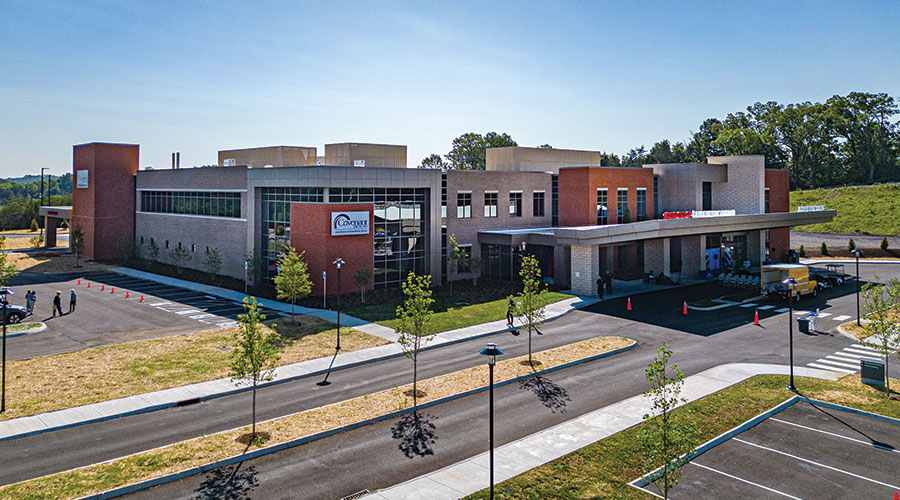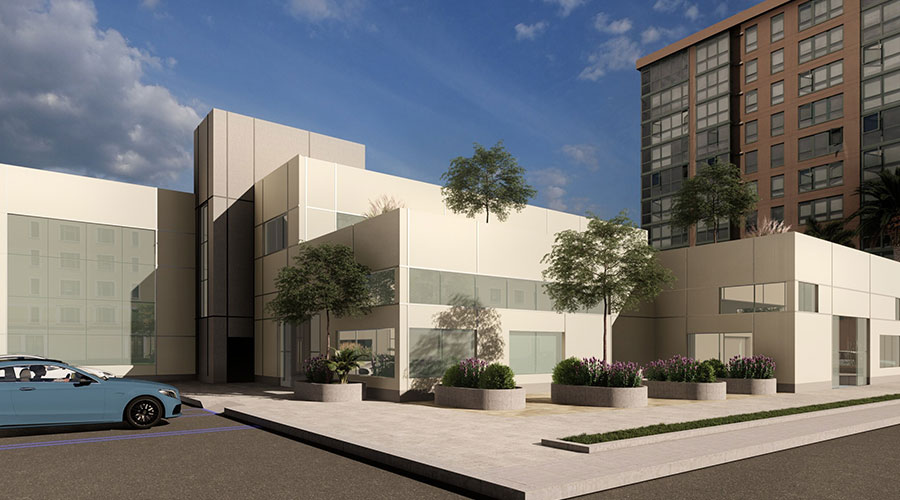Seeking emergency care or getting an X-ray once meant going to a traditional hospital in an urban center. But in the past few years, more healthcare organizations have chosen to build standalone medical facilities for emergency, surgical or diagnostic services.
More than one-quarter of our company’s general contracting work is healthcare construction. Recently, 60 to 70 percent of our healthcare projects have been ambulatory care-type facilities as more clients choose to invest in freestanding healthcare structures rather than in new patient towers or hospital renovations.
Several factors are driving this trend, including more affordable treatment for patients, efforts to reach patients in outlying areas and construction cost savings.
Expanding freestanding options
During the height of the COVID-19 pandemic, many healthcare systems in urban centers took financial hits due to escalating costs, especially for drug and medical supplies, and to lowered patient numbers due to lockdowns that affected in-person staffing levels and the pause of elective surgeries. Since then, there also has been growing consolidation in healthcare systems, rising costs for labor and medical supplies and increased demand for walk-in diagnostics and treatment.
All these factors likely are driving the movement toward ambulatory occupancy facilities, which are 20-30 percent more cost-effective to build. Constructing a traditional hospital comes with more stringent structural requirements. There is also more competition for parcels and logistical challenges with construction sites in busy downtown areas, many of which require vertical construction by adding multiple stories to existing structures.
Related: Collaboration is Key to Reducing Costs for Healthcare Facilities
Instead, healthcare systems are opting to buy more affordable parcels in outlying or less-congested areas and expand access to care and create a first touchpoint for patients beyond the system’s initial footprint.
Once that relationship with the patient is established, it can grow to other treatment services within the network.
For instance, a patient seeking care for an ankle injury at a walk-in diagnostic center might be referred to a surgeon and later undergo physical therapy — all with providers in the same healthcare system. This arrangement helps organizations that provide healthcare, and it offers more convenient access and often cost savings for patients.
Location considerations
Our company has built many freestanding ambulatory centers across the country in recent years. While most of the centers are located in outer-reaching communities, even urban hospitals are doing more outpatient and ambulatory facilities near their hospitals.
For example, Corewell Health in Grand Rapids, Michigan is building a $150 million outpatient surgery center across the street from its hospital. Even in an urban setting, substantial cost savings can be achieved by embracing the ambulatory occupancy model.
The University of Tennessee Medical Center in Knoxville built a freestanding orthopedic ambulatory surgery center, UT Medical Center’s Advanced Orthopaedic Institute, across a highway from its main campus. The standalone medical facility is a partnership with orthopedic provider OrthoTennessee, and company leaders say it offers patients a high-quality, cost-effective treatment option with more convenient access and parking.
Some hospital owners also are starting with a freestanding facility to expand access to outlying areas, which also allows for possible future growth. We constructed a standalone emergency room and diagnostic center at Morristown-Hamblen West in Morristown, Tennessee, which is 6 miles from the main hospital. The project addressed a growing demand for healthcare in that area and helped improve wait times at the main hospital emergency room.
Covenant Health, which operates the Morristown-Hamblen Healthcare System, also prepared for possible future expansion, so the site is ready if the system chooses to add a patient tower or emergency bay in the coming years.
Some medical situations require an overnight stay or a higher level of care, so traditional hospitals remain a critical resource for communities. But system executives have seen the benefits of supplementing that care with freestanding ambulatory centers that offer more convenient access and cost savings to both patients and healthcare systems. With escalating costs all around, a 20-30 percent savings in construction can be substantial.
The advantages of freestanding healthcare facilities for a community can be significant, including convenient access to healthcare in outlying areas and preventing patients from having to drive long distances or search for parking in an urban center. It also saves resources at main hospitals for cases that truly require that level of care. With all these benefits, the trend of constructing freestanding ambulatory facilities is likely to continue for years to come.
Brian Crissman is vice president of healthcare services at The Christman Company.

 UF Health Hospitals Rely on Green Globes to Realize Their Full Potential
UF Health Hospitals Rely on Green Globes to Realize Their Full Potential How Healthcare Facilities Can Be Truly Disaster-Resilient
How Healthcare Facilities Can Be Truly Disaster-Resilient TriasMD Breaks Ground on DISC Surgery Center for San Fernando Valley
TriasMD Breaks Ground on DISC Surgery Center for San Fernando Valley Bigfork Valley Hospital Falls Victim to Data Breach
Bigfork Valley Hospital Falls Victim to Data Breach AI-Driven Facilities: Strategic Planning and Cost Management
AI-Driven Facilities: Strategic Planning and Cost Management